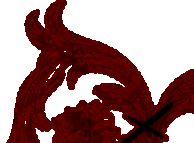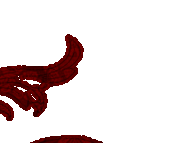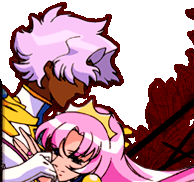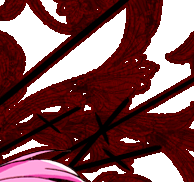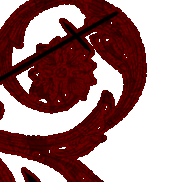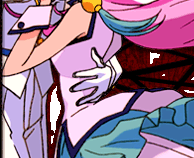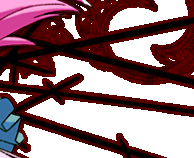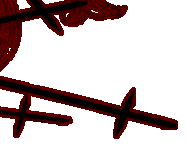
Broad and Thematic References in the Utena Series
Non-Specific References
The Shape of Ohtori Academy
 The shape of the school’s grounds mirrors strongly the Japanese burial mounds called Kofun. In particular the way the curved end is elevated to be a hill. This raised part of the burial site coincides with the forest in the school where the duels take place. The shape of the school’s grounds mirrors strongly the Japanese burial mounds called Kofun. In particular the way the curved end is elevated to be a hill. This raised part of the burial site coincides with the forest in the school where the duels take place.
The Location of Ohtori Academy
 The Yokohama Marine Tower is shown clearly in the background of the landscape in Nanami's Egg. The Yokohama Marine Tower is shown clearly in the background of the landscape in Nanami's Egg.
In The Barefoot Girl, Wakaba says, "The ocean was so pretty, the breeze felt so good... it was the bestest possible date." This implies they are near the coast.
Less firm but possibly, there is a popular landmark called the Cosmo Clock 21 Ferris wheel nearby.
These landmarks are all in and around Yokohama's Minami Ward, on the coast of Tokyo Bay. This is consistent with the Black Rose Saga forms placing Ohtori in Kanagawa Prefecture. Whether or not Ohtori is in Yokohama, the Marine Tower at least is definitely a direct lift.

The Student Council Arc
Episodes 1-13
Touga's Student Council Ascent Speech
If the egg's shell does not break, the chick will die without being born.
We are the chick; the egg is the world.
If the world's shell does not break, we will die without being born.
Break the world's shell!
Everyone: For the sake of revolutionizing the world!
|
Note left for Emil written by Demian:
The bird struggles out of the egg.
The egg is the world.
Who would be born must first destroy a world.
The bird then flies to God.
That God's name is Abraxas.) |
This speech is drawn from Hermann Hesse’s 1919 novel Demian, a Bildungsroman story originally published under the pseudonym Emil Sinclair, who is also the main character. The story features heavily the balance and exploration of two aspects of the character’s life, the world of illusion and the world of spiritual truth. The coming of age story follows this development of his sense of spirituality, and draws heavily from Jungian archetypes and symbolism, a strong influence on the author at the time.
The God Abraxas is mentioned repeatedly through the story, a figure meant to embody both the darkness and the light, that must break through the shell of the world that’s presented as wholesome, in accordance with the Christian God. By doing so the whole reality of darkness and light and their interplay can be revealed.

The title of this episode is a reference to Ernest Hemingway's 1940 novel For Whom the Bell Tolls. This reference is made in the Japanese title as well as the English one. The book is, basically, about destroying a bridge. This seems pretty apt given that Utena, by choosing to win this duel, has cast aside any hope of escaping the game.
The book Wakaba is reading and comments on at the beginning of the episode is called Magnolia Waltz, and some of the letters of Chiho Saito's name are visible. Magnolia Waltz is a three part 1994 spinoff of another manga Saito wrote, called Waltz in a White Dress in 1990.
Juri and Utena meet while wandering the grounds of Ohtori at night. In the scene they discuss Utena's prince, and the scene builds up to Juri attacking Utena and challenging her to duel. The statuary in the scene changes from shot to shot, though it's implied by the statue pedestals and the backed shot to be the same statue. This is done again, with some of the same statues, in the same place, in episode 31, Her Tragedy.
 |
This sets the stage and is exactly the same shot used in episode 31, Her Tragedy. There are a few visible statues, with the prominent one an abstract figure no one's identified.
|
 |
(Anyone know what this is?)
This statue does not appear later.
|
 |
(Anyone know what this is?)
A non-specific female figure in the classic Greek style.
This statue appears again in episode 31, Her Tragedy. |
 |
(Anyone know which one this is?)
This statue also appears later in Her Tragedy, episode 31. |
 |
(Anyone know which one this is?)
When Juri attacks Utena, the foreground is taken over with a lion with his paw on a small ball. This is a very common statue, and may be not a specific one. |

A-ko: Look, look, I've found a kitten.
A-ko: I wonder what I should name it.
B-ko: How about "Jewel?"
A-ko: That's too ordinary. Aren't there any more unusual names?
B-ko: "Unusual Jewel"
A-ko: Umm, no, not quite. Isn't there a name which is more tasteful?
B-ko: "Tasteful Unusual Jewel"
A-ko: No, that's not it...
A-ko: Isn't there some name that's cute-sounding, dignified, and easy to remember?
B-ko: "Cute-sounding Dignified Easy to Remember Tasteful Unusual Jewel"
A-ko: Oh, all right, already!
A-ko: If "Jewel" is really that good, than "Jewel" it is.
B-ko: Come here, Juliano.
The name Juliano is likely a reference to Aishite Knight, a shoujo manga and anime from the 1980s. Among the main characters is a fat tabby cat named Juliano, who is used as comic relief. B-ko ultimately names their cat Juliano once it's shown to have grown to a large, fat cat.
(Noticed by barafubuki on the Empty Movement Discord. Thanks!)

The Black Rose Saga
Episodes 14-24
The bird that flies into the window and cripples its wing during Shiori's conversation with Juri outdoors is a Java sparrow. It's a relatively common bird to find in Asia, and is often kept as a caged pet. The description of juveniles as brown is consistent with the birds that Kozue saves later in episode 26, heavily implying that this is the mother bird that has gone missing from that nest.
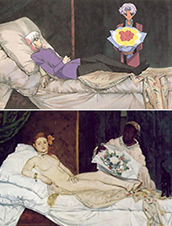 Nemuro is pictured in this otherwise fairly strange setting while the 100 other duelists are celebrating the victory he created. It's implied he wasn't invited to the party. The pose and placement of the characters is a clear reference to Édouard Manet's 1863 painting "Olympia." (This painting is itself modeled after Titian's 1534 painting. "Venus of Urbino".) Nemuro is pictured in this otherwise fairly strange setting while the 100 other duelists are celebrating the victory he created. It's implied he wasn't invited to the party. The pose and placement of the characters is a clear reference to Édouard Manet's 1863 painting "Olympia." (This painting is itself modeled after Titian's 1534 painting. "Venus of Urbino".)
"Olympia" caused something of a sensation for its time not because of nudity or anything else, but because it is clearly not a goddess or an allusion. It's instead a rather a frank painting of a prostitute, the figure looking assertively at the viewer. This is made clear in details of the painting, and even the name was a term used for prostitutes in Paris at the time.
Read into Nemuro being an implied prostitute however you like.

The Akio Arc
Episodes 25-33
Akio's car is modeled after the 1957 Chevrolet Corvette Roadster. There are a few minor differences, like Akio's not having the white detailing on the sides, and that actual Corvettes have absolutely never had backseats, but you know. Whatever.

A planetarium projector is a machine at the center of a darkened room that projects lights onto the ceiling above to create the illusion of stars, galaxies, or whatever else they like now that modern projectors use variable laser lights instead of holes in a black sphere with a light in the center.. The way a projector functions is clearly alluded to in the way Dios descends from the castle during the Akio Arc.
First, the lights in the castle go out, effectively darkening the arena. Then then cars that have previously been poised upright across the arena turn on, with headlight beams facing upward. They move to converge on the center of the arena to emit light from the position a projector would. The beams eventually join, and Dios descends through the bright light.
The implication is that the cars now function as a projector, and Dios is the image being created. This is made literal in Utena's duel with Akio, where the projector sits in the arena, lighting the castle that stays dark.

dy
During a conversation Nanami and Utena have about Akio, they are seen to be walking through a park area where their words are interspersed with a series of statues. The shots heavily suggest the statues, though they’re changing, appear to be in the same place. This is, based on the opening shot of the first statue, also where Juri and Utena meet in episode 7, Juri's Unfulfillment. They are identified as follows:
 |
(Anyone know which one this is?)
This statue also appears clearly in Juri's Unfulfillment, episode 7, framed exactly the same.
|
 |
A non-specific female figure in the classic Greek style.
This statue also appears clearly in Juri's Unfulfillment, episode 7.
|
 |
(Anyone know which one this is?)
This statue also appears clearly in Juri's Unfulfillment, episode 7. |
 |
A clear reference to Orpheus, the figure in Greek myth that goes to the Underworld to bring back his beloved, Eurydice. The conditions of their return are that he cannot look back to see her on the return journey. He is unable to stop himself from doing so, and so loses her forever, spending the rest of his days wandering aimlessly, playing the lyre.
|
 |
The Rape of Proserpina, a Baroque marble piece by Gian Lorenzo Benini, made in 1621-22. It refers to the Greek myth of Proserpina being abducted by Hades and taken to live in the underworld with him.
|
 |
The Town Musicians of Bremen, a bronze by Gerhard Marcks, erected in 1953. It is a reference to the Brothers Grimm folktale of the same name, wherein a group of old misfit animals decide to move to Bremen to live as musicians.
|

The Apocalypse Arc
Episodes 34-39
The story Juri tells about her sister being saved by a boy that drowned in the attempt is a likely reference to Night on the Galactic Railroad, where a major character dies under similar circumstances. The Adolescence Apocalypse movie builds on the reference, as in NotGR, the drowned character reappears, waterlogged, though now dead.
 |

